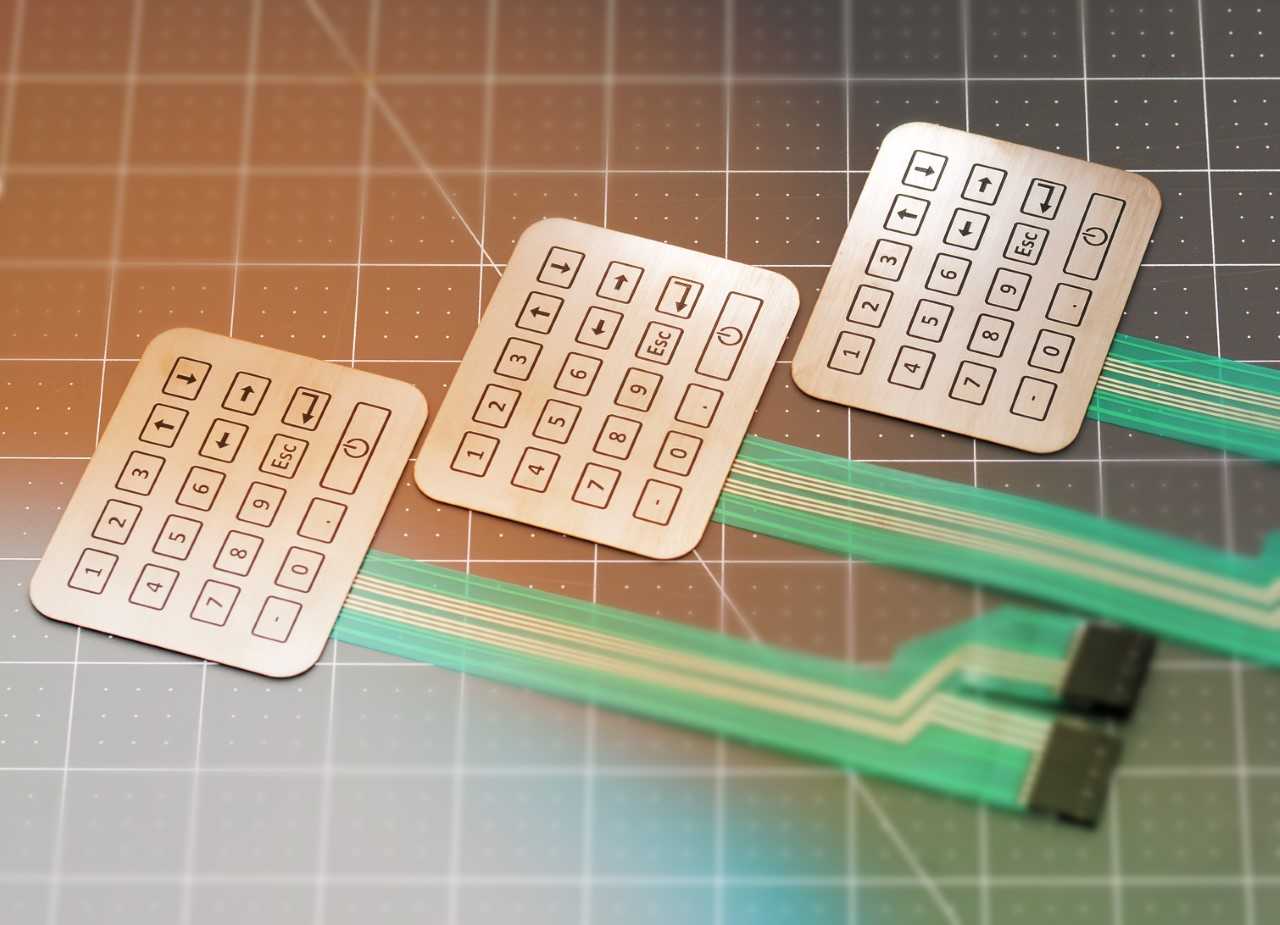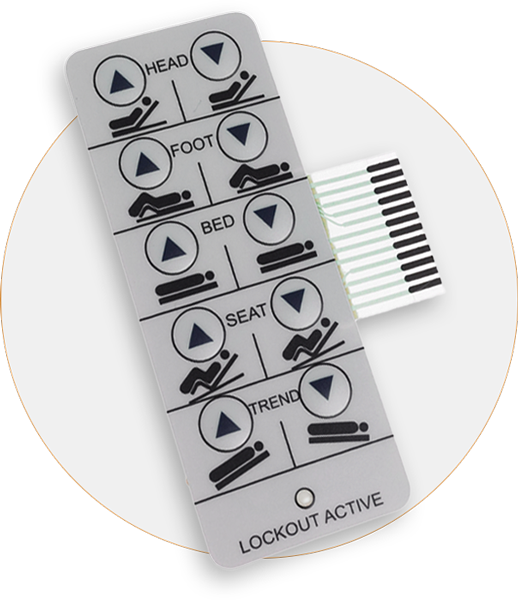Choosing a domestic membrane switch manufacturer can reduce lead times and delivery costs.
Choosing a domestic membrane switch manufacturer can reduce lead times and delivery costs.
Blog Article
Everything About Membrane Change: Comprehending Its Design and Capability
When you think about the control interfaces in contemporary gadgets, membrane layer buttons commonly come to mind. Allow's discover what sets membrane layer changes apart from various other control systems.
What Are Membrane Buttons?

Membrane switches can also be tailored concerning shape, size, and graphics, allowing makers to create unique interfaces customized to certain products. In general, membrane buttons play a significant duty in enhancing customer experience throughout a vast variety of applications.
Just How Membrane Switches Over Job
When you press a key on a membrane button, it turns on an uncomplicated yet effective device. The leading layer, frequently made of adaptable product, presses down onto a conductive layer below it. This activity bridges the space in between conductive traces, finishing an electrical circuit. As quickly as the circuit shuts, it sends out a signal to the device's controller, which analyzes your input.
You'll discover that the responsive feedback varies based on the button design, supplying either a soft click or a more noticable feedback. When you launch the secret, the membrane go back to its initial position, resuming the circuit and quiting the signal. This procedure takes place virtually instantly, making certain a responsive individual experience.
Membrane layer buttons are prominent as a result of their durability and resistance to dirt and moisture, making them perfect for different applications, from family appliances to medical gadgets. Comprehending this procedure aids you value their widespread usage.
Secret Elements of Membrane Switches
Recognizing the crucial elements of membrane layer switches is essential for comprehending their functionality and layout. The protective layer shields versus ecological elements and put on, prolonging the switch's lifespan. By comprehending these elements, you'll acquire insight into just how membrane switches operate and their significance in numerous applications.
Products Made Use Of in Membrane Layer Switch Over Design
The performance and toughness of membrane layer switches heavily depend on the materials made use of in their layout. You generally come across polyester and polycarbonate as primary substrates as a result of their superb strength and flexibility. These products resist scratches and chemicals, making them excellent for demanding atmospheres.
The conductive layers frequently make use of silver or carbon, picked for their dependability and conductivity. membrane switch manufacturer. Silver offers exceptional efficiency, while carbon is a cost-efficient alternative. For the overlay, you may consider a matte or glossy finish, depending on your aesthetic needs and individual experience
Adhesives play an important duty too; they bond layers safely and guarantee durability. Make certain to select adhesives that withstand environmental elements like temperature and moisture. Do not neglect the value of an excellent printing method for graphics, as it boosts both performance and visual allure. Choosing the ideal products will certainly assure your membrane switch stands the test of time.
Design Considerations for Membrane Buttons
While developing membrane switches, it's crucial to take right into account different factors that influence their functionality and individual experience. Start by focusing on the format and switch dimension; make certain they're intuitive and very easy to browse.
Verify your style fits environmental factors, like wetness or temperature level variations, which can influence performance. By meticulously thinking about these aspects, you'll create a membrane button that improves use and fulfillment.
Applications of Membrane Buttons
Membrane layer switches are versatile parts discovered in various applications, from commercial devices to consumer electronics. You'll see their effect in machines that call for durable user interfaces and in devices that take advantage of sleek designs. Comprehending these applications aids you value the performance and usefulness of membrane layer buttons in day-to-day technology.
Industrial Equipment Usage
When you're seeking to boost the functionality of industrial equipment, membrane layer switches supply a reliable service that incorporates toughness with straightforward style. These buttons are best for rough atmospheres, giving resistance to dust, moisture, and chemicals. You'll find them in control panels for manufacturing makers, a/c systems, and clinical gadgets, where precision and responsiveness are essential. Their low account implies they fit effortlessly right into different equipment, conserving important room while maintaining ease of usage. With personalized graphics and backlighting choices, you can read this post here produce an instinctive user interface for operators, boosting performance and safety and security. Plus, their long life-span decreases maintenance expenses, making them a smart investment for your industrial applications. Embrace membrane switches to simplify your operations and boost overall performance.
Consumer Electronics Integration
In the domain of customer electronic devices, membrane buttons play an essential role in improving user communication and tool functionality. Membrane buttons also guarantee longevity and resistance to dirt and dampness, expanding the life expectancy of your electronics. By picking membrane switches, you enhance not simply the performance but additionally the style of your gadgets, making day-to-day interactions smooth and pleasurable.
Advantages and Drawbacks of Membrane Buttons
While membrane layer buttons provide an array of advantages, they likewise come with some drawbacks that you should think about. One considerable advantage is their compact style, making them perfect for space-constrained applications.

Nevertheless, there are negative aspects. Membrane layer buttons can have a much shorter lifespan contrasted to mechanical buttons, especially under heavy use. They can also be much less tactile, which may affect user responses during operation. Additionally, if damaged, fixing them can be challenging and typically requires total substitute. Eventually, their sensitivity to extreme temperatures and ecological problems might restrict their effectiveness in certain setups. Stabilizing these advantages and disadvantages will assist you identify if membrane layer switches are the best fit for your task.
Regularly Asked Inquiries
For How Long Do Membrane Layer Switches Over Normally Last?
Membrane layer switches over commonly last between 5 to ten years, relying on use and environmental conditions. You'll intend to assess factors like wear, direct exposure to moisture, and temperature changes to assess their longevity successfully.
Can Membrane Layer Switches Be Customized for Certain Layouts?
Yes, you can personalize membrane layer buttons to fit certain designs (membrane switch manufacturer). You'll have the flexibility to pick colors, forms, and formats that match your job's demands, ensuring they mix seamlessly with your total aesthetic
What Is the Price Range for Membrane Layer Change Production?
The price range for membrane button production usually falls between $1 and $10 each, relying on aspects like style intricacy, amount, and materials. You can obtain quotes from manufacturers to locate the very best check my source choice.

Are Membrane Layer Switches Water-proof or Immune?
Membrane switches can be designed to be water-proof or immune, relying on materials utilized and building and construction methods. If you require them for damp environments, ensure you specify those needs during the layout procedure.
How Do Membrane Layer Switches Over Compare to Standard Buttons?
Membrane switches are normally thinner and extra flexible than typical buttons, providing a smooth style. They're commonly less complicated to cleanse and integrate, yet could not supply the tactile responses you're utilized to with mechanical choices.
Verdict

Report this page